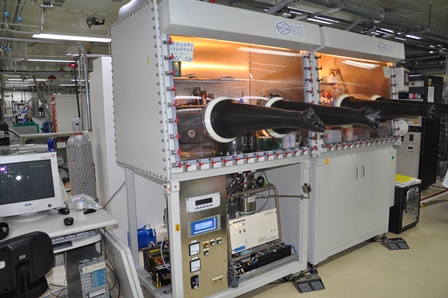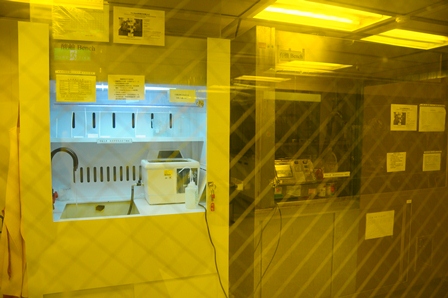Department of Photonics
National Chiao Tung University
Organic Electronics Laboratory



We aims to fabricate solar cells based on polymer and/or perovksite materials with high energy conversion efficiencies. We also seeks to potential applications other than convertional solar-energy applications. For instance, we prepared OPVs for biomedical applications, and low-level lighting energy harvesting for IoTs.Read More

Organic Light-Emitting Diodes (OLEDs) have been widely used as flat-panel displays of smart phones and TVs. We currently focus on their general lighting and display applications. Further, we also develop perovksite LEDs, as well as perovskite quantum dots, as they feature pure emissive color, and lost cost fabrication. Flexible LEDs for portable electronics is also another focus.Read More

Organic thin-film transistors (OTFTs) are very useful for many applications, such as flat-panel displays and sensors. Our lab develops novel organic semiconductors, organic dielectrics, and processing for fabricate high-performance OTFTs.Read More

Artificial intelligence (AI) has been received much attention recently. Our group have employed machine learning and deep learning algorithm for material screening of potential organic semiconductors for achieving high-performance organic opto-electronics.Read More

Organic photodectors (OPDs) provide many possibility for light detecting applications. For instance, we have fabricated photomultiple OPDs in the NIR wavelength range. Such highly sensitive NIR OPDs can be used as night vision, night surveillance and bioimaging. We are also working on flexible X-ray sensors for biomedical applications.Read More

We are also interested in many other flexible electronics, especially prepared with simple solution processing methods. We have many other experience, including organic memories and lasers. We also welcome any possible collaboration.Read More





Address: Room. 301, CPT Building, National Chiao Tung University
1001 University Road, Hsinchu, Taiwan 300, R.O.C.
TEL: +886-3-5712121 #59264